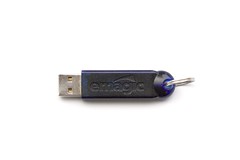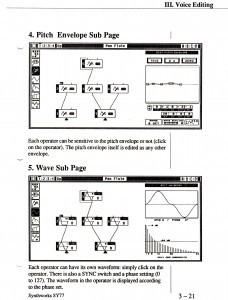I talk a lot about music hardware on this site, but the music that I write wouldn’t sound like much without software. Logic is my main audio production app, and I’ve been using it in various incarnations since about 1989, when it was called Notator SL, and was available exclusively on the Atari ST platform.
At that time Performer, by the embarrassingly named Mark of the Unicorn (more commonly known as MOTU for obvious reasons), was all the rage, but Macs were out of the price range of students and many Europeans, leading German software companies like C-Lab and rival Steinberg to create some truly kick-ass sequencing software for the less expensive Atari.
So in that respect I’m pretty lucky; I backed the right horse for once, and in spite of some kind of rift at C-Lab that resulted in a new company called Emagic, and the buyout of Emagic by Apple (there’s a detailed history at TweakHeadz Lab), I can actually dig out files I worked on 15 years ago and import them into my current setup.
In other respects, I’m like anyone else, in that I’ve been heavily reliant on music software that is no longer supported, and which has been rendered obsolete by seismic changes in Mac processors and operating systems over the years. And the more I invest in software instruments – my current arsenal consists of Logic Studio, Reason 4, and Native Instruments Komplete 6 – the more vulnerable I am to the sudden dissolution of any of the companies that produce them.
Bitheadz Retro AS-1, which I used to refer to as the “Retro-Ass” synth, was one of the earliest consumer-level real-time analogue synth emulators, and it worked pretty well on my 266 MHz PowerMac. I still have the install disk somewhere, which means I could install it on an XP box if I felt the need. Thankfully I don’t feel the need, really, and all I’ve lost is my initial investment of $250 or so – though I was pretty cheesed when these guys went under, without so much as a gurgle. As of now, there’s certainly nothing I needed the Retro-Ass to do that I couldn’t duplicate with Logic’s ES2 or a number of the NI synths. But there passed a few long years during which this was not the case.
Propellerheads RB-338 was from the same era, and emulated the Roland TR-303 bass synth and TR-808 and 909 drum machines. It emulated their user interfaces as well, which had a lot to do with the 303’s idiomatic lines in particular; that interface resulted in a lot of melodies that no one would have come up with first on a bass or a keyboard. It wasn’t quite powerful enough to construct a song on its own, but it laid the groundwork for Reason, which is gradually evolving into a soft-synth based audio workstation with the recent introduction of Record.
Propellerheads did a great and generous thing when they pulled the plug on ReBirth, in that they released a Reason ReFill with all the ReBirth sounds and made it available for a free download. Of course, you no longer had the 303 or the UI. And if you had been downloading the user hacks, which replaced all the sounds in the drum machines with user-created samples, of course you didn’t have those anymore either.
Aside from Notator, the music app that I spent the most time in on the Atari was an amazing patch editor/librarian for my Yamaha TG77 called Synthworks SY77, made by Steinberg. The SY/TG77 is a hybrid synth that was both a ROMpler and an FM synth, boasting “Advanced FM” (AFM) synthesis. AFM2 gave you access to not only sine wave operators but more complex op waveforms and even ROM samples as operators, plus resonant digital filters, which was pretty groundbreaking at the time. I amassed a huge collection of sounds for this machine that would have been impossible to create and maintain without Synthworks.
Considering the fact that the Atari had no hard drive, merely an internal DD floppy drive (I had the external floppy drive as well, which made me some kind of power user), 1MB of internal RAM, and an 8MHz processor, Synthworks did a phenomenal job of indexing, retrieving, and comparing over 3,000 patches. But Synthworks was also a powerful editor, giving you intuitive graphic controls for the SY77’s myriad parameters, even allowing you to create FM algorithms that were not available from the front panel of the hardware unit itself. It could also generate random patches based on a selection from the library, or allow you to proportionally mix parameters from up to four separate sounds using a simple point-and-click graphic interface. Neat-o! And while this software hasn’t been supported for over a decade, I still refuse to admit that it’s dead – I still have the software, an Atari, and the hardware dongle, in case I ever decide to fire the TG77 up again.
Stay tuned for part 2, I’m going somewhere with this, honest.



